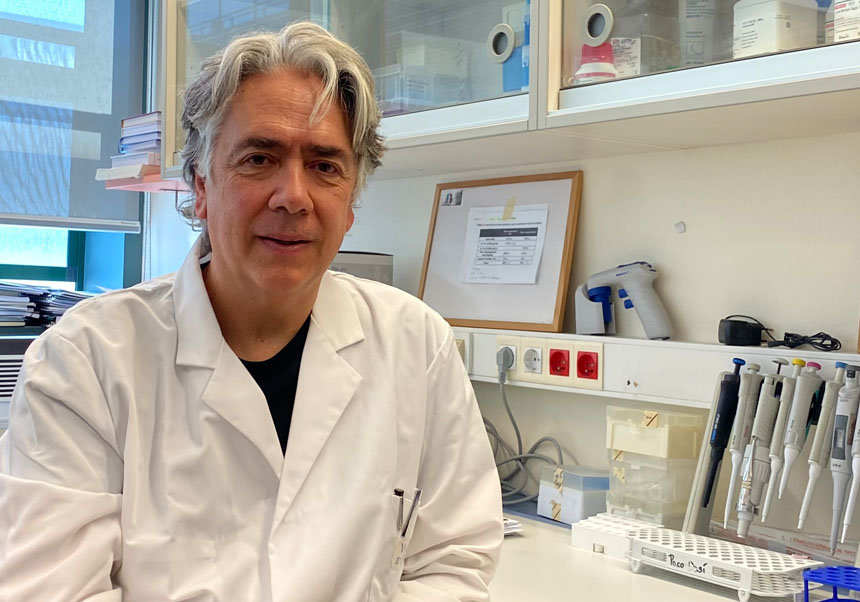Link between chronic kidney disease and heart conditions demonstrated using Rabphilin protein
- Scientific Culture and Innovation Unit
- August 12nd, 2021

Josep Redón, Professor of Medicine at the University of Valencia (UV) and Rubén Artero, Professor of the Department of Genetics at the academic institution, have developed a study aimed at expanding knowledge about the relationship between chronic kidney disease and heart conditions, especially at the genetic level. The work, prepared at the INCLIVA Health Research Institute (Clinical Hospital of Valencia) in which both are researchers, has been published in the journal Scientific Reports.
The relationship between chronic kidney disease and heart conditions is known because approximately 50% of patients with chronic kidney disease end up dying from some heart disease. Because chronic kidney disease is a highly prevalent pathology, discerning the genes that may be behind the association of this disease with heart conditions is essential to improve the life expectancy of patients. This work, which began in 2017, takes a first step in that direction.
In it, the importance of Rabphilin in the cardiac system of Drosophila (model fly, known as ‘vinegar fly’ or ‘fruit fly’, because it frequently stays near ripe or rotten fruit) is demonstrated, in addition to showing how silencing the expression of this gene in nephrocytes (kidney stones) has an effect on the heart system.
Drosophila has been used for decades as a model organism for human diseases, since it has a level of conservation of genes related to human diseases of around 70%, in addition to having the advantages of rapid life cycles, numerous offspring and easy drive.
Once its expression was demonstrated in both tissues, and with the aim of finding genes that could be relevant in the association between kidney and heart disease, the impact that the silencing of this gene in different tissues had on the cardiac system of Drosophila was studied. Specifically, it was possible to observe how the interference directed to only the heart, or to the heart and nephrocytes at the same time, of the expression of Rabphilin, had a significant impact on the organisation of the transverse actin fibres of the Drosophila heart, which may be, in part, a possible explanation for the reduction in the half-life that these flies experienced.
In the article published in Scientific Reports, in addition to Josep Redón (coordinator of the INCLIVA Cardiometabolic and Renal Risk Study Group and head of the Internal Medicine service of the Clinical Hospital of Valencia; and Rubén Artero (coordinator of the INCLIVA Translational Genomics Laboratory), Estela Selma Soriano, Carlos Casillas Serra, Beatriz Llamusi and Juan Antonio Navarro have also intervened.
The use of technical instruments such as the Zeiss confocal microscope, obtained through INCLIVA (with funding from the FEDER Operational Program of the Valencian Community 2014-2020), as well as the use of Hamamatsu high-speed cameras, have been essential at the time to technically develop the project.
To carry out the task of demonstrating the expression of the Rabphilin protein in the heart of the Drosophila, confocal microscopy on dissected flies was used to detect the signals emitted by the antibodies directed precisely against the Rabphilin protein.
For the analysis of the disorganisation of the actin microfilaments of the Drosophila heart, the Voronoi diagrams were used, a mathematical technique that allows innovating the current methodology in the analysis of tissue disorganisation.
Finally, for the study of the functional parameters of the heart, conventional optical microscopy coupled to a Hamamatsu high-speed camera was used, which allows recording videos of the functioning of the heart.
The study had a budget of 194,205 euros and was made possible with funding from the Carlos III Health Institute within the framework of the Strategic Action in Health grants.
Article: Selma-Soriano, E., Casillas-Serra, C., Artero, R. et al. «Rabphilin silencing causes dilated cardiomyopathy in a Drosophila model of nephrocyte damage». Sci Rep 11, 15287 (2021). https://doi.org/10.1038/s41598-021-94710-7
















